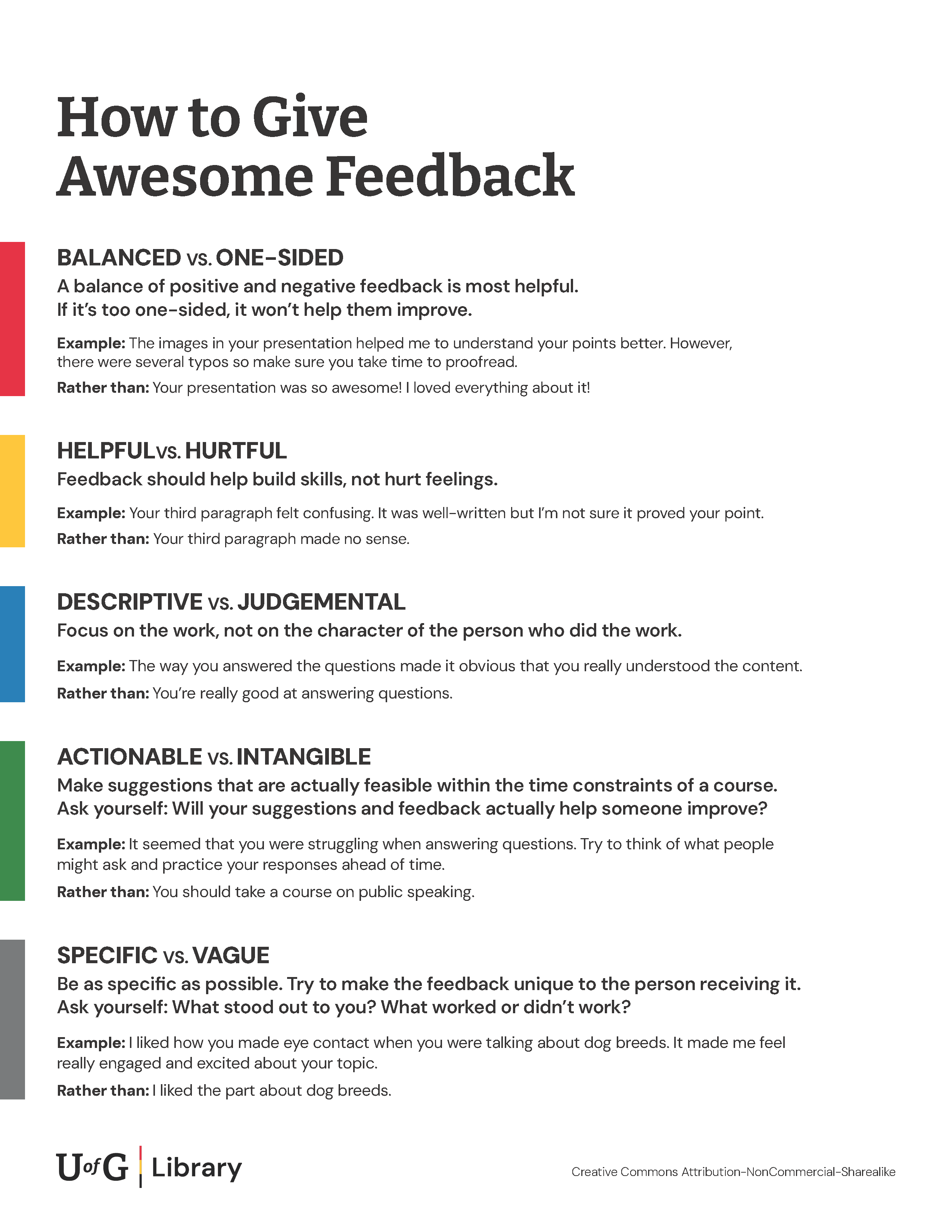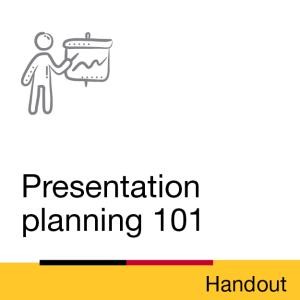Time commitment
Less than 2 minutes
Description
When commenting on a presentation or paper, it is important to provide meaningful insights instead of reactions. Use this guide to identify the characteristics of constructive feedback so you can support others effectively.
Infographic

Downloads
Transcript
Balanced vs. One-Sided
A balance of positive and negative feedback is most helpful.
If it’s too one-sided, it won’t help them improve.
Example: The images in your presentation helped me to understand your points better. However, there were several typos so make sure you take time to proofread.
Rather than: Your presentation was so awesome! I loved everything about it!
Helpful vs. Hurtful
Feedback should help build skills, not hurt feelings.
Example: Your third paragraph felt confusing. It was well-written but I’m not sure it proved your point.
Rather than: Your third paragraph made no sense.
Descriptive vs. Judgemental
Focus on the work, not on the character of the person who did the work.
Example: The way you answered the questions made it obvious that you really understood the content.
Rather than: You’re really good at answering questions.
Actionable vs. Intangible
Make suggestions that are actually feasible within the time constraints of a course.
Ask yourself: Will your suggestions and feedback actually help someone improve?
Example: It seemed that you were struggling when answering questions. Try to think of what people might ask and practice your responses ahead of time.
Rather than: You should take a course on public speaking.
Specific vs. Vague
Be as specific as possible. Try to make the feedback unique to the person receiving it.
Ask yourself: What stood out to you? What worked or didn’t work?
Example: I liked how you made eye contact when you were talking about dog breeds. It made me feel really engaged and excited about your topic.
Rather than: I liked the part about dog breeds.
License

This work is licensed under a Creative Commons Attribution-NonCommercial-ShareAlike 4.0 International License.
Recommended
- Ask Chat is a collaborative service
- Ask Us Online Chat hours
- Contact Us

